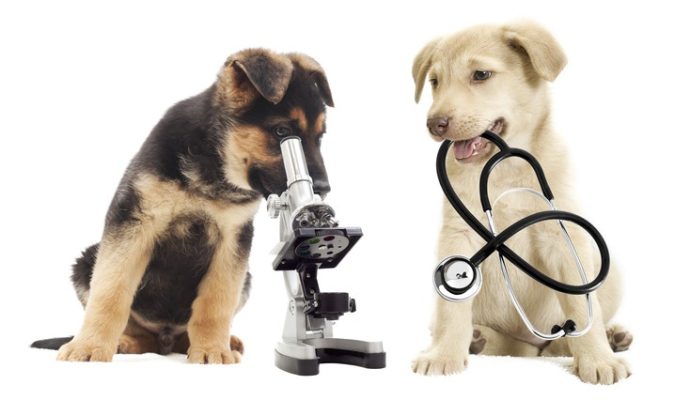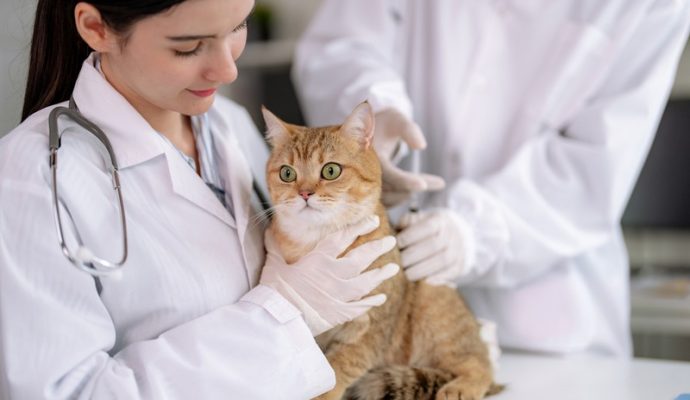Imagine a world where your furry friends can enjoy the benefits of advanced healing techniques, alleviating their pain without the need for invasive procedures. This is the realm of cold laser therapy in veterinary medicine. It’s a revolutionary method that has gained traction in recent years for its non-invasive approach to pain management and healing in animals. In this article, we’ll delve into what cold laser therapy is, how it works, and why it might be a great option for your pet’s health and wellness needs.
Exploring the Science Behind Cold Laser Therapy
At its core, cold laser therapy, also known as low-level laser therapy (LLLT), involves the use of specific wavelengths of light to interact with tissue. It’s called ‘cold’ because, unlike other forms of laser therapy, it does not produce significant amounts of heat. This makes it safe for use on living tissues without the risk of causing burns or discomfort.
The science behind cold laser therapy is fascinating. When the light emitted from the laser is absorbed by cells, it stimulates them to accelerate the healing process. This process, known as photobiomodulation, can reduce inflammation, alleviate pain, and enhance tissue regeneration. The specific wavelengths will penetrate different layers of tissue, from the surface of the skin down to muscles, tendons, and even bones.
Benefits of Cold Laser Therapy for Pets
-
Non-invasive and painless
-
No known side effects
-
Decreases inflammation and pain
-
Promotes faster wound healing
-
Can improve nerve function and quality of life
-
Often reduces the need for medications
Variety of Conditions Treated with Cold Laser Therapy
The versatility of cold laser therapy is one of its key attractions. It can be used to treat a wide array of conditions across different types of animals. These include but are not limited to:
-
Arthritis and other degenerative joint diseases
-
Soft tissue sprains and strains
-
Wound management, including post-surgical incisions
-
Inflammatory conditions such as hot spots or ear infections
-
Gingivitis and other dental issues
-
Intervertébral disc disease
Treatment Protocol and What to Expect
A typical cold laser therapy session is quite straightforward and stress-free for your pet. The duration of each session and the frequency of treatments will depend on the specific condition being addressed. Sessions can last from a few minutes to half an hour. During the treatment, a veterinarian or trained technician will move the laser handpiece over the affected area, delivering therapeutic light to the tissue beneath. Most pets tend to relax, some even appearing to enjoy the sensation.
Post-Treatment: Observing the Results
Following a cold laser therapy session, many pet owners report visible improvements. The reduction of inflammation and pain relief often has immediate effects, such as an increase in mobility or a reduction in visible discomfort. Long-term benefits may include accelerated tissue repair and improved quality of life.
Advancements in Veterinary Healthcare
Veterinary medicine is continuously evolving, with new treatments and therapies emerging to better care for our animals. Practices like Advance Veterinary Hospital are at the forefront of such advancements, offering state-of-the-art care in numerous areas, including dentistry. Their services often encompass a variety of innovative treatments, such as cold laser therapy for cats in Franklin.
Integration of Holistic and Traditional Practices
More veterinary clinics are combining traditional medical practices with holistic therapies like a cold laser, providing a comprehensive approach to animal healthcare. By integrating these methods, vets can personalize treatment plans to suit individual pet needs and preferences.
Consideration for Pet Owners
When considering cold laser therapy for your pet, it’s important to consult with a qualified veterinarian. They can provide a detailed assessment to determine if your pet is a good candidate. In addition, they’ll discuss the potential benefits and any limitations of the therapy for your specific situation.
Frequent Questions and Concerns
-
Is cold laser therapy safe?
-
Will my pet feel any pain during the treatment?
-
How long will it take to see results?
-
Is there any downtime after a session?
Your vet should be able to answer these questions and put to rest any concerns you may have. Open communication will ensure the best outcome for your beloved companion.
Specialized Services
At an advanced facility like Advance Veterinary Hospital, pets have access to specialized services that go beyond routine care. This includes expertise in areas such as dental care, which can prevent and treat serious conditions affecting a pet’s oral health. Their commitment to comprehensive care means they are equipped to offer services like veterinary dentistry care.
But their dedication to animal health doesn’t stop at treatment. Preventative care is crucial, and ensuring your pet receives regular pet vaccinations can protect them from a variety of diseases and ailments.
Veterinary Dentistry Care
Veterinary dentist for pet care maintenance is an essential component in maintaining an animal’s overall health:
-
Check-ups: Routine dental check-ups help detect early symptoms of oral problems.
-
Professional Cleaning: This involves removing tartar and plaque and cleaning below the gum line.
-
Dental X-Rays: X-rays help gauge the interior condition of teeth and jawbone.
-
Treatments: Include procedures to treat gingivitis, periodontal disease, broken teeth, and oral cancer.
-
Home Care: Regular at-home teeth cleaning helps keep pet teeth healthy between visits.
Making sure your pet receives proper dental care is vital; ignoring this can lead to serious health complications beyond bad breath and tooth loss.
Future of Cold Laser Therapy in Vet Med
The future of cold laser therapy in veterinary medicine looks promising. As research continues and technology advances, we are likely to see increased precision in treatment protocols and perhaps even new applications for this therapy.
As pet owners become more knowledgeable and seek holistic treatment options, cold laser therapy stands to gain more popularity. Its ability to integrate seamlessly with other treatment modalities means that it will continue to be part of personalized care programs designed to meet the unique needs of individual animals.
Final Thoughts
Cold laser therapy’s non-invasive nature, combined with its effectiveness in treating various conditions, makes it an exciting addition to the array of treatment options available in veterinary medicine. It represents a significant step forward in managing pain and promoting healing in our pets. As with any medical decision, working closely with a trusted veterinary professional is key to providing your pet with the best possible care.
Whether you’re interested in recovery options post-surgery, managing chronic pain, or enhancing your pet’s overall quality of life, cold laser therapy offers a compelling choice. It’s imperative that, as a responsible pet owner, you stay informed about these advancements. This knowledge empowers you to make the best health decisions for your furry family.




